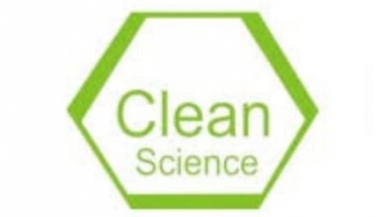Clean Science and Technology’s (Clean Science) Q3FY23 EBITDA margin at 45.6% was up 620bps QoQ as the company benefited from lower raw material prices, while it has not reduced realisation for key products, including MEHQ. However, peers who manufacture MEHQ (include downstream products) from HQ-route have suffered due to higher HQ prices, which has dropped to US$7/kg (from peak of US$13), will come back soon as economics have become favourable. Clean Science has begun the production of two HALS products of 770 and 701 series. It has started sending samples for validation and expects to reach 50% utilisation in the next six months. It plans to add more HALS series from Dec’23-Mar’24 which should make its portfolio strong to cater both Indian and international demand. It does not anticipate any shake up in HALS industry from its capacity addition as market of US$1.25bn for HALS is growing by 10% pa. We have maintained our estimates for Clean Science, but cut our target price to Rs1,525 (from Rs1,540) as we rollover valuations to FY25E, and reduce PE multiple to 40x (earlier 45x). Maintain HOLD. Success in HALS is key to watch out.
• Performance chemicals revenue grew 47.6% YoY. In Q3FY23, Clean Science’s revenue grew 31.3% YoY (down 4.1% QoQ) to Rs2.4bn. This was driven by the performance in chemicals segment wherein revenue grew 47.6% YoY to Rs1.7bn which benefited from 50% increase in capacity for MEHQ and BHA. Pharmaceutical intermediates revenue grew 9.1% YoY (down 10% QoQ) to Rs396mn and was impacted by slower sales in new product PBQ, a raw material for agrochemicals. FMCG chemicals’ revenue grew 12.9% YoY, but dipped 13.1% QoQ as the company is utilising more anisole as feedstock for increased MEHQ capacity, thus, lowering third-party sales.
• EBITDA margin rose 620bps QoQ to 45.6%. Clean Science’s gross profit margin jumped 470bps QoQ to 67.2%, and gross profit increased by 36% YoY to Rs1.6bn. It believes margins have benefited from lower raw material prices, while stable pricing for its key products including MEHQ. It said it has not proportionately increased prices when raw material prices rose, and therefore, it is not under any pressure to reduce prices sharply, in line with the input price drop. Other expenses were lower 15% QoQ due to decline in coal prices (power cost) and freight cost. EBITDA was up 42% YoY to Rs1bn, and net profit grew 44.5% YoY to Rs838mn.
• Clean Science plans for further expansion in HALS production. Company said it is advantageously placed in HALS manufacturing as it is fully backward integrated, and KSMs are acetone and ammonia. It has commenced production of 770 and 701 series where sales should reach 1kpta (annualised) in 6 months. It also planning for more product addition by Dec’23 for which it has announced Rs3bn of capex in unit-4 to be commissioned by Dec’23. The intent is to build the entire HALS portfolio, which will help the company ramp up its market share globally.
• Other highlights. 1) Industry MEHQ volume growth is 5-6% pa; and company intends to grow faster compared to industry growth. However, it will not aggressively chase market share as it will then need to drop prices which it does not wish to compromise; 2) HQ price has dropped from US$13/kg to US$7/kg which may bring back certain capacity of MEHQ which has struggled previously on higher raw material prices; 3) China opening up should benefit Clean Science which is its largest market; 4) new products (three products including TBHQ, and PBQ) contributed 10% to revenue; 5) Clean Science has started sending samples of HALS products to distributors for validation and is confident of achieving 50% capacity utilisation (1ktpa annualised production) in 6 months; 6) India predominantly uses only 770 and 994 HALS series products. It has already launched 770, and expects 994 series to be launched by Dec’23, thus, catering key demand from India. 7) HALS market is US$1.25bn, growing at 10% pa, thus, increased capacity by Clean Science can be easily accommodated by the market without much shake up; and 8) capex in FY23 is expected at Rs2.2bn, and Rs1.5bn in FY24.
• Risks: Upside – 1) Higher-than-expected sales from HALS; and 2) further recovery in margins. Downside – 1) Slower-than-expected acceptance of HALS in international market; and 2) higher-than-expected discounting in HALS which can hurt margins.
